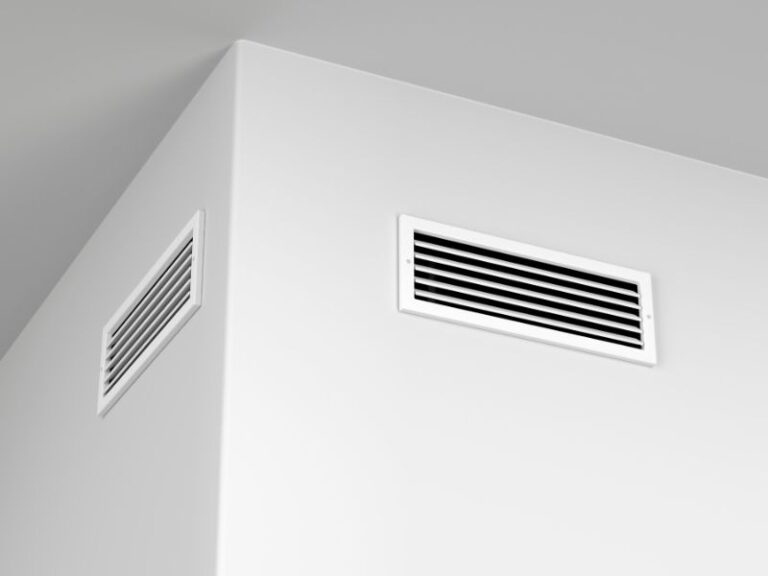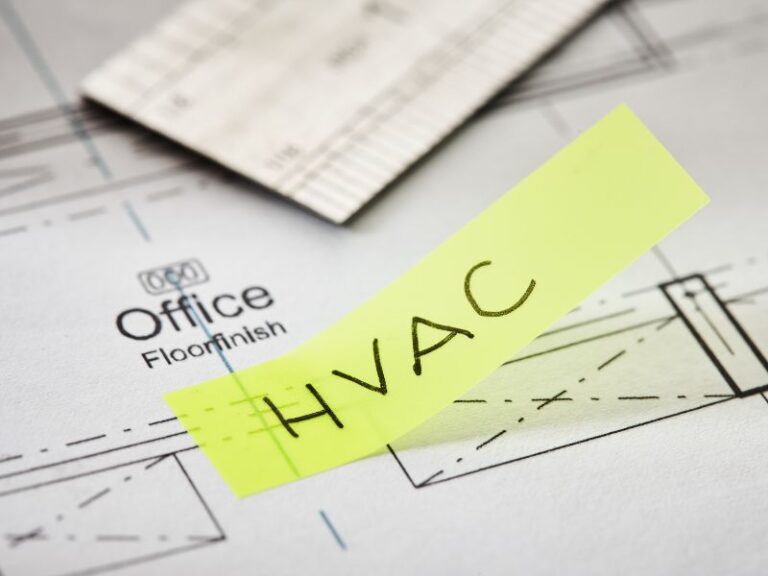When it comes to ensuring the efficiency of your HVAC (Heating, Ventilation, and Air Conditioning) system, building materials play a significant role. The materials used in the construction of a building directly influence how much heating or cooling energy is required to maintain a comfortable indoor environment. Insulation, walls, windows, and roofs all have a profound impact on the HVAC system’s performance and energy consumption.
In this article, we’ll explore how different building materials affect HVAC system efficiency and the ways you can optimize energy use by considering these materials during construction or renovation. Whether you are designing a new building or upgrading an existing one, understanding the relationship between materials and HVAC efficiency can help you make smarter decisions to reduce energy costs, increase comfort, and improve sustainability.
How Building Materials Impact HVAC Efficiency
The efficiency of an HVAC system is highly influenced by how well it can regulate temperature and air quality in relation to the heat gain and heat loss in the building. Different materials affect these factors in various ways. Let’s break down the impact of specific building materials on HVAC performance.
1. Insulation: The First Line of Defense Against Heat Transfer
Insulation plays a key role in controlling the amount of heat entering or leaving a building. It helps maintain indoor temperature by reducing heat loss during the winter and heat gain during the summer. Well-insulated buildings place less strain on the HVAC system, resulting in lower energy consumption and cost savings.
Types of Insulation Materials and Their Impact:
- Fiberglass Insulation: One of the most common and effective insulators. It minimizes heat loss in winter and reduces heat gain in summer. Properly installed fiberglass insulation can significantly enhance HVAC performance.
- Spray Foam Insulation: Offers superior air sealing and insulation performance. It expands when applied and fills gaps and cracks that other types of insulation might miss, improving energy efficiency and preventing drafts.
- Cellulose Insulation: Made from recycled paper products, cellulose offers good thermal resistance and can reduce air infiltration. It’s a more eco-friendly option but may require additional treatment to avoid moisture issues.
Why It Matters: A building with poor insulation requires the HVAC system to work harder to maintain a comfortable temperature, leading to higher energy consumption. Effective insulation helps keep the heating or cooling inside the building where it’s needed, reducing reliance on the HVAC system.
2. Windows and Glazing: Controlling Solar Heat Gain
Windows are the most significant source of heat gain and heat loss in buildings. The type of glazing, window framing, and the direction in which windows face can dramatically influence HVAC efficiency. If windows are poorly insulated or have inefficient glazing, they can result in increased cooling loads in the summer and heating loads in the winter.
How Windows Affect HVAC Efficiency:
- Single-Pane Windows: These windows offer minimal insulation, allowing heat to transfer easily, which can increase heating and cooling costs.
- Double-Pane and Triple-Pane Windows: These windows are more energy-efficient as they have a layer of air or gas between the panes that helps to reduce heat transfer. Low-emissivity (Low-E) coatings can further enhance performance by reflecting heat back into the building.
- Window Orientation: South-facing windows receive the most sunlight during the day and can increase cooling demand, while north-facing windows typically experience less direct sun, reducing the cooling load.
Why It Matters: Installing energy-efficient windows can significantly reduce the cooling load in the summer and heating load in the winter, improving HVAC system performance. Properly placed windows that allow natural light while reducing excessive heat gain can help maintain more consistent indoor temperatures and reduce HVAC usage.
3. Roof Materials: Managing Heat Absorption and Loss
The roof of a building is exposed to constant temperature changes and is a major source of heat gain in the summer and heat loss in the winter. The type of roofing material used can have a big impact on the efficiency of an HVAC system, especially in regions with extreme weather conditions.
Roofing Materials and Their Impact on HVAC Efficiency:
- Asphalt Shingles: While cost-effective, asphalt shingles tend to absorb heat and can increase cooling loads in the summer. However, proper attic insulation can help mitigate some of the effects.
- Reflective Roofing (Cool Roofs): Made from materials that reflect more sunlight and absorb less heat, cool roofs can significantly reduce the cooling load, especially in hot climates.
- Green Roofs: Covered with vegetation, green roofs can provide natural insulation, reducing both heating and cooling loads. They also help with stormwater management and improve air quality.
Why It Matters: Choosing the right roofing material can prevent heat buildup in the attic or upper floors of a building, reducing the load on the HVAC system. Cool roofs are particularly effective in reducing cooling costs, while green roofs help with both energy efficiency and sustainability.4. Wall Materials: Regulating Indoor Temperature
The materials used in the walls of a building also significantly impact HVAC performance. Materials like brick, concrete, and wood have different thermal properties, affecting how much heat is transferred in or out of the building.
Wall Materials and Their Impact on HVAC Efficiency:
- Brick and Concrete: These materials have high thermal mass, meaning they absorb and store heat during the day and release it at night. This can help moderate indoor temperatures, reducing the demand on HVAC systems. However, during hot summers, they can absorb heat and require more cooling.
- Wood and Drywall: These materials tend to have lower thermal mass, meaning they are more susceptible to temperature fluctuations. Proper insulation is key to ensuring that HVAC systems are not overworked in these types of buildings.
- Insulated Concrete Forms (ICFs): ICFs are made of foam insulation combined with concrete, offering excellent thermal insulation and reducing the amount of energy needed to heat or cool the building.
Why It Matters: Materials with high thermal mass can reduce the need for HVAC intervention, keeping the indoor temperature stable. On the other hand, buildings with poorly insulated walls may require more energy to heat or cool, leading to inefficient HVAC operation.
5. Floor Materials: Impact on Heating and Cooling
Flooring materials also play a role in HVAC efficiency, particularly when it comes to heating systems like radiant floor heating or air distribution in cooling systems.
Flooring Materials and Their Impact on HVAC Efficiency:
- Tile and Concrete Floors: These materials have high thermal mass, meaning they retain heat and can keep rooms warmer in the winter, reducing the load on heating systems.
- Wood and Carpet Floors: These materials tend to be less efficient at retaining heat. Carpeted floors can reduce the effectiveness of radiant floor heating systems by acting as an insulating barrier between the heating elements and the room.
Why It Matters: Using high thermal mass flooring materials like tile or concrete can help reduce the workload on HVAC systems by maintaining more stable indoor temperatures, especially when paired with radiant floor heating.
How CoolCalc Can Help Optimize HVAC System Design
When designing or retrofitting a building, one of the most important steps is to accurately size the HVAC system to match the unique characteristics of the space. CoolCalc is an essential tool that helps HVAC professionals and building owners calculate the precise cooling load based on various factors, including building materials, insulation levels, and local climate.
By factoring in building materials and other specific elements, CoolCalc ensures:
- Optimal HVAC system sizing: Avoids the costs of over-sizing or under-sizing the HVAC system.
- Increased energy efficiency: Properly sized systems are more efficient and consume less energy.
- Cost savings: Reduces both installation and energy costs, and helps maintain comfort without overburdening the HVAC system.
Conclusion
The choice of building materials significantly impacts the performance and efficiency of your HVAC system. Proper insulation, energy-efficient windows, reflective roofing, and high thermal mass walls and floors can all reduce the strain on your HVAC system, leading to lower energy costs, improved comfort, and extended system life.
By understanding how different materials affect heat gain and heat loss, you can make more informed decisions when building or renovating your home or business. And with tools like CoolCalc, you can ensure that your HVAC system is correctly sized and optimized for energy efficiency and comfort.
Ready to design your HVAC system for maximum efficiency? Use CoolCalc to get accurate cooling load calculations and ensure your system is optimized for your building’s specific needs!




